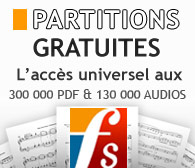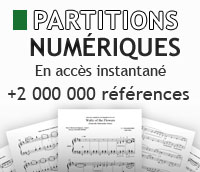The events of Beethoven's life are the stuff of
Romantic legend, evoking images of the solitary creator
shaking his fist at Fate and finally overcoming it
through a supreme effort of creative will. Born in the
small German city of Bonn on or around December 16,
1770, he received his early training from his father
and other local musicians. As a teenager, he earned
some money as an assistant to his teacher, Christian
Gottlob Neefe, then was granted half of his father's
salary as court musician fr...(+)
The events of Beethoven's life are the stuff of
Romantic legend, evoking images of the solitary creator
shaking his fist at Fate and finally overcoming it
through a supreme effort of creative will. Born in the
small German city of Bonn on or around December 16,
1770, he received his early training from his father
and other local musicians. As a teenager, he earned
some money as an assistant to his teacher, Christian
Gottlob Neefe, then was granted half of his father's
salary as court musician from the Electorate of Cologne
in order to care for his two younger brothers as his
father gave in to alcoholism. Beethoven played viola in
various orchestras, becoming friends with other players
such as Antoine Reicha, Nikolaus Simrock, and Franz
Ries, and began taking on composition commissions. As a
member of the court chapel orchestra, he was able to
travel some and meet members of the nobility, one of
whom, Count Ferdinand Waldstein, would become a great
friend and patron to him. Beethoven moved to Vienna in
1792 to study with Haydn; despite the prickliness of
their relationship, Haydn's concise humor helped form
Beethoven's style. His subsequent teachers in
composition were Johann Georg Albrechtsberger and
Antonio Salieri. In 1794, he began his career in
earnest as a pianist and composer, taking advantage
whenever he could of the patronage of others. Around
1800, Beethoven began to notice his gradually
encroaching deafness. His growing despondency only
intensified his antisocial tendencies. However, the
Symphony No. 3, "Eroica," of 1803 began a sustained
period of groundbreaking creative triumph. In later
years, Beethoven was plagued by personal difficulties,
including a series of failed romances and a nasty
custody battle over a nephew, Karl. Yet after a long
period of comparative compositional inactivity lasting
from about 1811 to 1817, his creative imagination
triumphed once again over his troubles. Beethoven's
late works, especially the last five of his 16 string
quartets and the last four of his 32 piano sonatas,
have an ecstatic quality in which many have found a
mystical significance. Beethoven died in Vienna on
March 26, 1827.
These five pieces surfaced after Beethoven's death,
bringing with them several very puzzling mysteries.
Most challenging of them all was the instrument for
which they were written. Piano, strings, harp and most
other common instruments were instantly ruled out,
building on the perplexing mystery and adding to the
frustration. Eventually, Albert Kopfermann set forth a
convincing argument that their strange scoring seemed a
perfect fit for the Flötenuhr or Spielühr, a
mechanical organ or clock. He observed that the
notation in No. 1, in F, matched that in Mozart's K.
608 Fantasia (for Flötenuhr), the score of which
Beethoven possessed. Other circumstantial factors
pointed to the Flötenuhr as the instrument Beethoven
designed these pieces for.
A second mystery regarding these five works is the time
of their composition. It appears that Nos. 4 and 5,
both in C, were written as early as 1794 or perhaps
slightly later. The others were likely written in
1799-1800. No. 1, marked Adagio, features a very
attractive theme, which Beethoven deftly develops. He
obviously took this music very seriously, despite the
unorthodox instrumentation. The Scherzo (No. 2), in G,
is also well crafted, as is the delightful Minuet (No.
5).
None of these five pieces was published until the
twentieth century, and, not surprisingly, all are
rarely heard. This arrangement is the Allegro from No.
3 in G Major and although originally written for
Mechanical Organ (or Flute Clock), I created this
arrangement for Flute Trio.
 (par Magatagan, Michael)269x⬇ 762x
(par Magatagan, Michael)269x⬇ 762x (par Magatagan, Michael)172x⬇ 339x
(par Magatagan, Michael)172x⬇ 339x (par Magatagan, Michael)186x⬇ 267x
(par Magatagan, Michael)186x⬇ 267x











 PARTITION
PARTITION